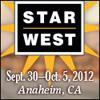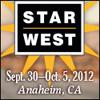|
|
Leveraging Core Values for Healthier, More Productive Teams
Slideshow
Although all teams require a healthy level of interaction, high-performing teams' interactions are all based on trust, respect, and shared goals. Such teams find ways to overcome the fear of conflict, and quickly identify and resolve issues that are getting in the way. Scott Ross shares how, when the Omnyx software R&D department determined their culture was hindering performance, they crafted a core values statement that has served them well for the past three years. Scott describes the ways they proactively and intentionally use their value statement to drive the culture they seek and discusses the results they have achieved. Take back the list of resources that Scott uses daily to help himself and others see how their actions add to and take away from their core values.
|
Scott Ross, Omnyx
|
|
|
Beyond Processes and Tools: What about Ethics?
Slideshow
Too often we focus only on the latest headline-grabbing processes and products. While recognizing that we must respond to ever-changing business needs, deep down we know we must live by a few absolutes as we approach our daily work. At the core is a standard of ethical conduct that we always uphold. With an ethical underpinning, we will earn the trust and respect of our peers and those we serve. Jackie Pulley presents a framework for professional ethics within the IT development profession, including key practices from her experiences gained during more than twenty years in IT software development. Drawing on the PMI ethics standards, her personal lessons learned, and conversations with other leaders, Jackie offers a thought-provoking session for C-Level executives, freshly degreed software developers, and everyone in between.
|
Jackie Pulley, Pulley Consulting Partners, LLC
|
|
|
The Journey from Manager to Leader: Empowering Your Team
Slideshow
As I reflect on my struggles empowering teams to become self-managing, I am amazed that I didn't understand earlier. Things that seem so obvious after the fact are often difficult to acknowledge in the moment. I failed to recognize that my extensive experience with risk mitigation was preventing the team from taking risks. Tricia Broderick shares the lessons she learned in her journey from manager to leader. Join in and expect challenging self-reflection as you work with Tricia to recognize how your past successes can create limitations for your team. Learn about assumptions and expectations surrounding self-managing teams, common misunderstandings of what you need to do to empower a team, and the reasons why so many managers, despite their good intentions, fail. Leave with a goal to let go of certain skills that helped achieve your professional success.
|
Tricia Broderick, TechSmith Corporation
|
|
|
Red Beads: A New Tool for Managing Software Projects
Slideshow
Warning! Warning! Managing software projects may be accompanied by continued bouts of nausea-brought on by unmet expectations, process churn, late deliveries, and worse. In their attempt to conquer these problems, many managers stiffen their resolve, create stricter schedules, and install rigid processes to guide development from inception to production. Howard Deiner demonstrates that better results come from fundamental changes in the way managers and the organization approach problems. Drawing on W. Edward Deming’s "14 Obligations of Management," Howard reprises (with volunteers from the audience) Deming's famous Red Bead Experiment on its 30th anniversary and draws conclusions about how our approach to problem-solving affects our day-to-day work. Expect to get up on your feet and have a lot of fun "working" in a simulation of a modern workday environment, leading and managing the development efforts.
|
Howard Deiner, Deinersoft, Inc.
|
|
|
Group Interaction Patterns: The Keys for Highly Productive Teams
Slideshow
Development teams often fail to recognize the complex group interactions and multi-person relationships that are critical to build and maintain a highly productive team. Instead, they adopt follow-the-crowd practices such as stand up meetings or Kanban boards without understanding the underlying fundamentals. Michael Wolf introduces group interaction patterns of highly productive development teams to provide a framework for understanding group interactions and a vocabulary for discussing ways to improve. Michael demonstrates a simple tool-based on nine keystone patterns-that you can use to observe and understand your team members' interactions. He shares case studies that illustrate successes, failures, and turnarounds he's observed and explores how they relate to the different group interaction patterns.
|
Michael Wolf, Self
|
|
|
Form Follows Function: The Architecture of a Congruent Organization
Slideshow
One principle architects employ when designing buildings is "form follows function." That is, the layout of a building should be based upon its intended function. In software, the same principle helps us create an integrated design that focuses on fulfilling the intent of the system. Ken Pugh explores congruency-the state in which all actions work toward a common goal. For example, as Ken sees it, if you form and promote integrated teams of developers, testers, and business analysts, then personnel evaluations should be focused on team results rather than on each individual’s performance. If you embrace the principle of delivering business value as quickly as possible, the entire organization should focus on that goal and not the more typical 100% resource utilization objective. If you choose to have agile teams, then they should be co-located for easy communication, rather than scattered across buildings or the world.
|
Ken Pugh, Net Objectives
|
|
|
Creating a Professional Credo: Aligning Career, Goals, and Personal Happiness In a world where technology is rapidly changing, development practices are quickly evolving, and teams are frequently reorganized, how can you remain steady and true to yourself? Even though things are changing around you, you can build a solid framework of personal beliefs to guide you throughout your professional career. To develop a credo-from the Latin “I believe”-is to take a personal journey through your professional life and the ideas that shaped it, ultimately creating your own statement of core beliefs. This credo forms a stable foundation for personal plans and actions. Marlena Compton shares the framework she’s used to build her professional credo. She examines manifestos and mission statements that have influenced her beliefs about building software and how she uses her credo as a basis to form concrete goals and take action.
|
Marlena Compton, Mozilla
|
|
|
Why Self-reflection Matters! All of us have experienced situations when we receive feedback. Some we readily accept; some we quickly reject. In a community that should be dedicated to constantly inspecting and adapting, why do we reject some feedback immediately? Tricia Broderick believes that self-reflection is the key to processing feedback in a positive light. In this interactive session, you’ll work with Tricia and other delegates to experience enriching discomfort, practice deep reflection, and ascertain why we can be so quick to dismiss feedback. Gain an understanding of how discomfort and self-reflection can be an IT professional's best friends. Leave with an expanded understanding of self-reflection that includes taking greater responsibility for personal development and tweaking your improvement-seeking process. If you are looking to get out of your comfort zone and grow as an individual and team member, this session is for you.
|
Tricia Broderick, TechSmith Corporation
|
 |
STARWEST 2012 Keynote: Tapping into Testing Mobile Applications
Video
Look around you at all those people gazing into smart phones and tablets, tapping away, seemingly oblivious to what’s going on around them. Like it or not, mobile devices and the applications they host are now enmeshed in our everyday lives.
|
Jonathan Kohl, Kohl Concepts Inc.
|
 |
STARWEST 2012 Keynote: Becoming a Kick-*** Test Manager
Video
Want to be a great test manager for your team? A leader your company values highly? Too many test managers do what their organization asks—rather than what their organization needs—and hope for good things to happen. Great test managers are leaders who don’t accept the status quo.
|
Johanna Rothman, Rothman Consulting Group Inc.
|

